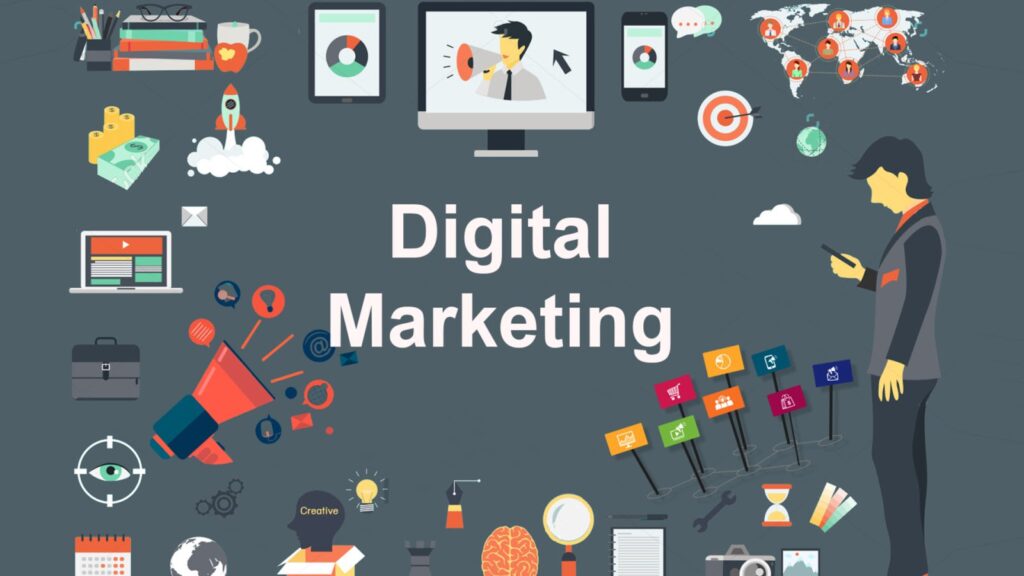Winning in the Digital World: The New Rules of Marketing

In the digital age, the marketing landscape has transformed drastically. Gone are the days when traditional methods like print ads, billboards, and TV commercials dominated the marketing world. Today, businesses must navigate an ever-evolving digital ecosystem to reach their target audience and achieve growth. To win in the digital world, companies need to adopt a new set of marketing rules—strategies that leverage technology, data, and consumer behavior to maximize their reach and impact.
In this article, we’ll explore the new rules of marketing that every business must follow to succeed in today’s digital landscape.
1. Customer-Centricity: Putting the Consumer at the Heart of Your Strategy
The first rule of modern marketing is simple: put your customers first. Consumers today expect brands to understand their needs, preferences, and pain points. In the digital age, customers are empowered with more information and choices than ever before, so businesses must prioritize the customer experience at every touchpoint.
Key strategies for customer-centric marketing:
-
Personalization: Personalize your messaging, content, and offers to cater to individual customer preferences. Tools like AI-driven personalization engines can help you deliver tailored experiences based on user behavior and data.
-
Customer Feedback: Regularly gather feedback from your customers to understand their needs and pain points. Use surveys, social media listening, and reviews to refine your offerings and improve the customer experience.
-
Customer Journey Mapping: Map out the customer journey to understand how customers interact with your brand across different channels. By identifying pain points or friction in the journey, you can optimize the process and deliver a seamless experience.
The modern customer is at the center of all marketing efforts. Businesses that prioritize their customers’ needs and create meaningful, personalized experiences will thrive.
2. Content is Still King: Focus on Value-Driven, Engaging Content
While marketing methods may have evolved, one truth remains constant: content is still king. However, the way businesses create and distribute content has changed. Instead of just pushing out promotional messages, brands now need to focus on creating value-driven, engaging content that informs, entertains, and builds trust with their audience.
Effective content strategies for digital marketing:
-
Storytelling: In the digital world, storytelling has become an essential tool for capturing attention and building emotional connections with your audience. Share authentic stories about your brand, your mission, and your customers to engage people on a deeper level.
-
Educational Content: Provide content that educates your audience and helps solve their problems. Blog posts, how-to guides, webinars, and video tutorials are all great ways to offer value while building your brand’s authority.
-
Visual and Video Content: Visual content, especially video, continues to dominate digital marketing. Platforms like YouTube, TikTok, and Instagram have made video a critical tool for engaging audiences. Invest in high-quality visuals and short-form videos to capture attention and drive engagement.
Content that resonates with your audience and provides real value will help you stand out in a crowded digital marketplace.
3. Data-Driven Marketing: Leveraging Insights for Smarter Decisions
The ability to collect and analyze data is one of the biggest advantages of digital marketing. Brands now have access to vast amounts of data on customer behavior, preferences, and interactions. The key to winning in the digital world is using this data to make informed, data-driven marketing decisions.
How to implement data-driven marketing:
-
Analytics and Tracking: Use tools like Google Analytics, social media insights, and email marketing reports to track the performance of your campaigns. Analyze metrics such as website traffic, conversion rates, engagement, and ROI to understand what’s working and what’s not.
-
Customer Segmentation: Use data to segment your audience into different groups based on demographics, behavior, or purchase history. This allows you to deliver more personalized and relevant marketing messages.
-
A/B Testing: Continuously test different elements of your campaigns, such as ad copy, visuals, and call-to-actions. A/B testing allows you to identify which variations perform best, leading to better outcomes and increased conversions.
Data is the backbone of modern marketing. By leveraging insights, you can refine your strategies, optimize campaigns, and ultimately achieve better results.
4. Omnichannel Marketing: Creating a Seamless Experience Across Platforms
Today’s consumers interact with brands across multiple platforms, devices, and channels. Whether they’re browsing your website, engaging with your social media content, or visiting your physical store, they expect a seamless and consistent experience. The new rule of marketing is to adopt an omnichannel approach that integrates all customer touchpoints to deliver a cohesive brand experience.
Best practices for omnichannel marketing:
-
Consistency Across Channels: Ensure your brand messaging, tone, and visual identity are consistent across all platforms, from your website and social media to email marketing and physical stores.
-
Unified Customer Data: Use integrated marketing platforms or customer relationship management (CRM) tools to unify customer data from different channels. This allows you to track customer interactions across platforms and deliver personalized experiences based on their journey.
-
Cross-Channel Engagement: Engage with your audience across multiple channels, whether it’s through email, social media, content marketing, or paid ads. For example, if a customer interacts with your brand on Instagram, you can retarget them with an ad on Facebook or follow up with an email offer.
By creating a seamless and integrated customer experience, businesses can strengthen their relationships with customers and increase engagement across all touchpoints.see more
5. Social Media Engagement: Building Communities and Conversations
Social media has become one of the most powerful tools for digital marketing. Platforms like Instagram, Facebook, LinkedIn, Twitter, and TikTok are essential for connecting with your audience, building brand awareness, and driving traffic. However, the key to winning in social media marketing is not just posting content—it’s about building genuine engagement and fostering community.
Social media strategies for success:
-
Authentic Conversations: Engage with your audience through meaningful conversations. Respond to comments, answer questions, and participate in discussions to create a sense of community around your brand.
-
Influencer Partnerships: Collaborate with influencers who align with your brand to reach new audiences. Influencers can help amplify your message and build trust with their followers.
-
User-Generated Content (UGC): Encourage your customers to create content related to your brand, whether it’s sharing their experiences, posting product reviews, or creating videos. UGC builds authenticity and social proof for your brand.
Successful social media marketing goes beyond simply broadcasting messages; it’s about engaging with your audience and building long-term relationships.
6. Mobile-First Approach: Optimizing for the On-the-Go Consumer
With the majority of online users accessing the internet via mobile devices, adopting a mobile-first approach is no longer optional—it’s essential. A mobile-friendly website, fast loading times, and seamless mobile experiences are critical to winning in the digital world.
Mobile optimization strategies:
-
Responsive Design: Ensure your website is fully responsive, meaning it adjusts and looks great on any device, whether it’s a desktop, tablet, or smartphone.
-
Mobile-Optimized Content: Shorter, easily digestible content works best for mobile users. Break up text with visuals, use bullet points, and keep paragraphs concise.
-
Fast Load Times: Mobile users expect fast load times, so optimize your site speed by compressing images, using lightweight design elements, and minimizing unnecessary plugins.
A mobile-first mindset will help you meet the needs of today’s on-the-go consumers and ensure you don’t miss out on valuable traffic and conversions.
7. Paid Advertising: Targeting Precision and ROI
While organic reach is important, paid digital advertising is an essential part of any modern marketing strategy.Our agency provides digital marketing services aksoftco.com The ability to precisely target your audience based on demographics, interests, and behavior allows businesses to achieve measurable results and a strong return on investment (ROI).
Effective paid advertising strategies:
-
Targeted Social Ads: Platforms like Facebook, Instagram, LinkedIn, and TikTok offer powerful targeting options. You can reach specific audiences based on age, location, interests, job titles, and even behavior patterns.
-
Retargeting: Use retargeting campaigns to re-engage users who have previously visited your website or interacted with your content. Retargeting ads have higher conversion rates because they target users who are already familiar with your brand.
-
Paid Search Campaigns: Google Ads and Bing Ads allow businesses to target customers actively searching for products or services. Paid search ads can deliver high-intent traffic and generate quick results.
By incorporating paid advertising into your digital marketing strategy, you can drive more qualified leads and achieve faster results.
Conclusion
Winning in the digital world requires a deep understanding of the new rules of marketing. By focusing on customer-centric strategies, creating value-driven content, leveraging data, embracing omnichannel marketing, engaging on social media, adopting a mobile-first approach, and utilizing paid advertising, businesses can build stronger connections with their audience and achieve long-term success.
The digital landscape is constantly evolving, but by staying agile and following these modern marketing principles, businesses can thrive in a competitive, technology-driven world. The key is to remain customer-focused, data-driven, and ready to adapt to the ever-changing dynamics of digital marketing.






